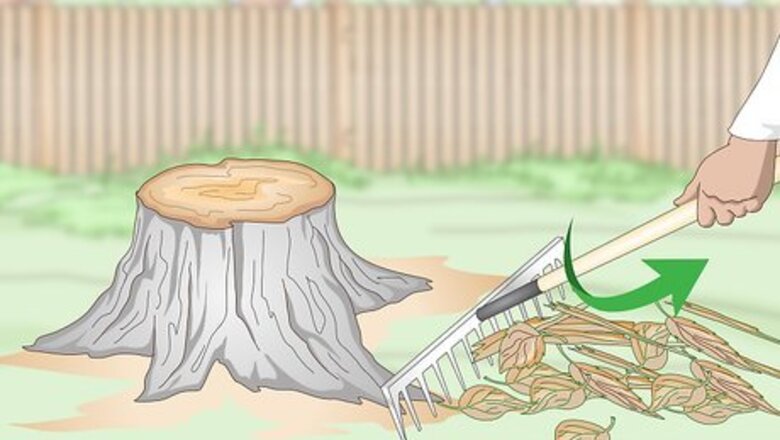
views
Making the Stump Flammable

Clear away flammable materials from around the stump. Move wooden structures and materials away from the stump. Use a rake to clear away any dried leaves or small sticks on the surrounding ground. You might also consider surrounding the stump with chicken wire for added safety. Always keep a bucket of water or water hose nearby during the burn.

Drill a hole in the center of the stump from the top. Attach a 1 inch (2.5 cm) spade bit or other wood-boring bit to your power drill and drill a hole in the center of the stump at a 30-degree angle. Drill your hole roughly 8 inches (20 cm) to 10 inches (25 cm) deep. If your stump is shorter than 8 inches (20 cm), just drill far enough down so that you reach the roots. Make sure you clear the debris out of the hole once you've finished drilling.

Repeat the drilling process across the top of the stump. Once you've drilled your hole in the center of the stump, continue to drill holes across the top, leaving roughly 1–3 inches (2.5–7.6 cm) of space between each hole you drill. Like with your center hole, each hole should be 8 inches (20 cm) to 10 inches (25 cm) deep. If your stump is shorter than this, make sure your holes are at least 3 inches (7.6 cm) deep. Clear the debris out of each hole once you're finished drilling.
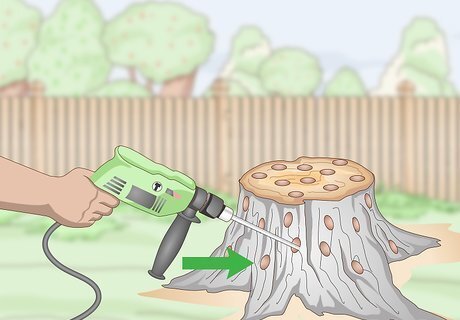
Make holes in the sides of the stump if it is above ground. If the sides of the stump are still visible after the tree was cut down, drill holes into the stump around its perimeter to allow the stump to catch fire and burn more easily. As you did with the holes drilled from the top of the stump, leave roughly 1 inch (2.5 cm) of space between each hole you drill along the stump's perimeter. Be sure to drill these holes so that they connect to the holes you drilled from the top down. The more air that is able to circulate throughout the stump, the easier it will be to burn it.
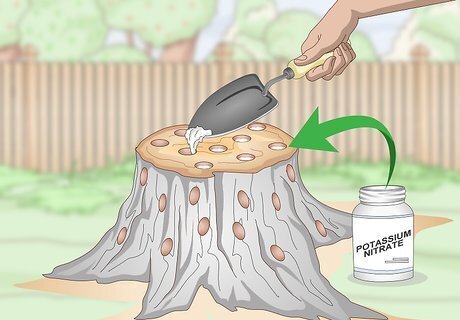
Fill each hole with potassium nitrate using your garden trowel. This will make your stump burn exceptionally well. Leave roughly .5 inches (1.3 cm) of space from the top when filling the holes. For maximum protection, wear protective clothing such as gloves, a mask, and protective goggles when working with potassium nitrate. Make sure to wash your hands thoroughly after handling potassium nitrate. Store it in a well-ventilated place and in a tightly closed container when you're not using it. Charcoal can also be used in place of potassium nitrate. You might also opt to use kerosene to make your stump more flammable. However, you'll have to leave the stump for a week to soak up the kerosene before lighting it.
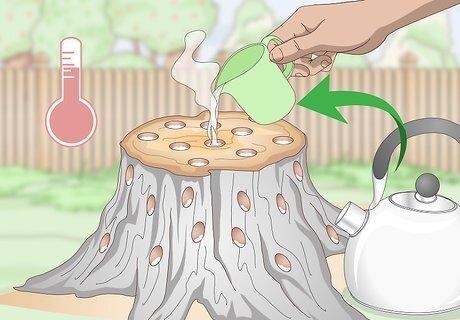
Pour hot water into each hole to dissolve the potassium nitrate. Use a cup with a spout and a bucket full of hot water. Dip the cup into the bucket, then pour the water into the holes. Continue pouring water until all the potassium nitrate has dissolved. You can also place funnels in each hole and pour water directly from the bucket into the funnels. The water will help to spread the nitrate throughout the stump and make the entire structure more flammable. You don't have to pour water into the stump if you opted for charcoal or kerosene instead of potassium nitrate.
Igniting the Stump
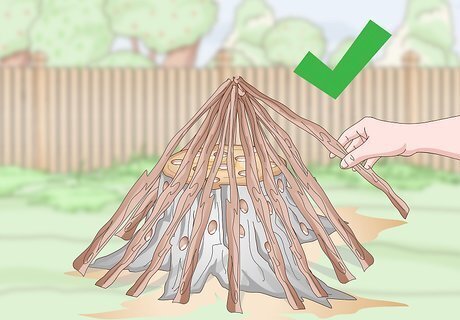
Construct a teepee-like shape over the stump with scrap wood. Place one end of each piece of scrap wood on the ground at an angle and have the opposite ends all meet over the top of the stump in a cone shape. This is a common method of assembling firewood over open flames to promote combustibility. You can also simply put the scrap wood on top of the tree stump. However, the stump may take longer to ignite this way.
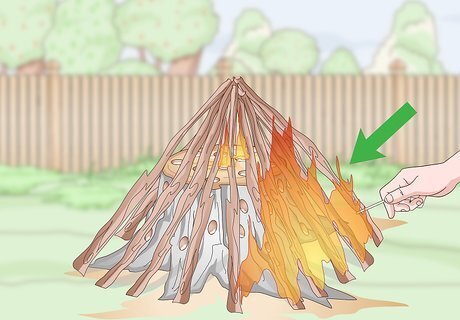
Light the scrap wood and wait for the stump to ignite. Use a match of kindling to light the scrap wood from the bottom. Do NOT use gas to light the scrap wood. The time it takes for a stump to catch on fire varies on a case-by-case basis. Allow up to 1 hour for the stump itself to ignite. Dry leaves, dry bark, and even dryer lint all make good kindling when starting a fire. Any dry, easily shredded material makes great kindling.
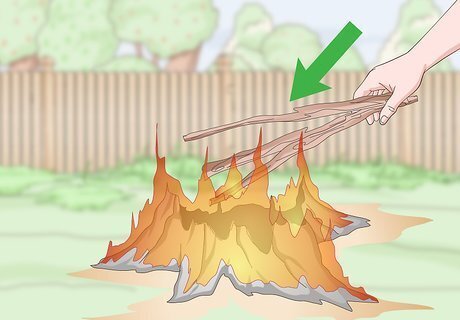
Add more wood to keep the fire going as necessary. Your stump will probably take several hours, or maybe even days, to completely burn. Add scrap wood to the fire as necessary to keep burning the stump until it's gone. You will most likely not have to add any wood to the fire for a small stump; the initial fire will probably be enough to burn the entire stump. If your stump takes more than a day to be removed through burning, add wood to the fire until midnight, then let it burn until the morning. The fire will weaken overnight but in all likelihood will not die out.
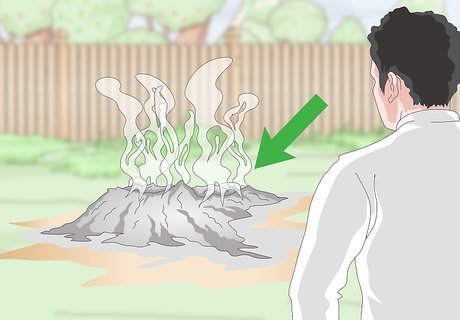
Monitor the stump until all the wood has been reduced to ash. As the stump smolders and the wood is turned to ash, keep an eye on the stump to make sure the fire is under control and doesn't need to be rekindled. Be ready to put out the fire with water or dirt if it begins to burn out of control or threaten to spread to the surrounding area. Schedule a hefty block of time in which to carry out your burning; the stump will probably take at least an hour or 2 to be removed.
Removing the Burned Stump

Use a shovel to break up and remove any remaining roots. Once the fire has stopped smoldering and all the wood has been burned, use your shovel to break up any large pieces of root or stump that are still in the holes. If the roots of the stump are still in place and tough to remove with a shovel, consider chopping them with an ax to break them up and make them easier to remove.
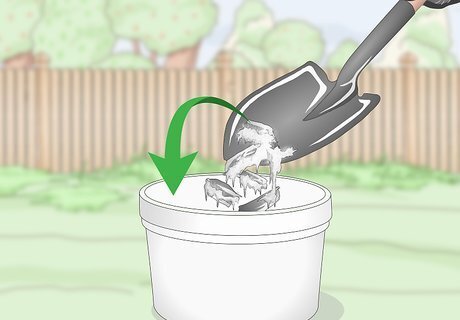
Place the burned pieces in a fire-safe container or bucket. Do NOT place these pieces on the grass surrounding the burned-out stump, as they may still be smoldering and could cause a fire. Be careful when handling these pieces; if they're still smoldering, they can burn you. Use protective gloves if possible. Aerated concrete or composite wood are good examples of fire-resistant materials you might use.

Fill the burned-out hole with new soil. Once all the debris has been removed, replace the area where the stump was with fresh soil to match the area surrounding the hole. Cover your newly filled hole with turf seed to cause grass to grow in the exposed patch of soil.



















Comments
0 comment